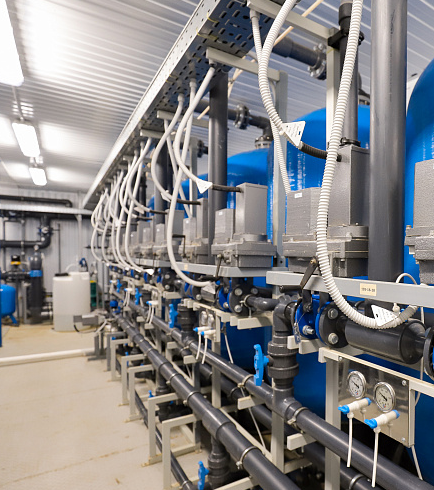Dec . 07, 2024 08:05 Back to list
installing a submersible pump in a deep water well
Installing a Submersible Pump in a Deep Water Well
Installing a submersible pump in a deep water well is a crucial task that requires careful planning and execution. Submersible pumps are designed to operate under water, making them highly effective for deep wells where traditional pumps might struggle. This article will guide you through the essential steps, considerations, and tips for successfully installing a submersible pump.
Understanding Submersible Pumps
Submersible pumps are electric pumps that are submerged in the water they are pumping. They consist of a hermetically sealed motor and a pump body. The primary advantage of using a submersible pump is its efficiency. When submerged, the pump can push water to the surface more effectively than a conventional above-water pump, which relies on suction.
Planning the Installation
Before diving into the installation process, thorough planning is paramount. First, consider the depth of your well and the volume of water you need to pump. It's essential to select the right pump size—standard options range from 1/2 horsepower to several horsepower for deeper wells. Consult the pump manufacturer’s specifications to ensure you choose the correct model for your water needs.
Next, assess the well’s diameter. Submersible pumps come in various sizes, and knowing the well's diameter will help you select a pump that fits properly. Additionally, determine the power source for your pump, taking into consideration that submersible pumps usually require a significant electric supply.
Gathering Tools and Equipment
To install the pump, you will need specific tools and equipment. At a minimum, your toolbox should include a wrench, a pipe cutter, pliers, a level, and safety gear such as gloves and goggles. Additionally, you may require a crane or a winch to lower the pump into the well safely, as submersible pumps can be heavy and cumbersome.
Installation Process
installing a submersible pump in a deep water well

1. Preparation Begin by turning off the power supply to the well. Safety is paramount. Remove any obstruction from the well and ensure that the site is clean.
2. Attach the Pump to the Pipe The pump will be connected to a discharge pipe. Use a wrench to tighten any fittings securely. It is crucial that there are no leaks.
3. Lowering the Pump Using a winch or a crane, carefully lower the pump into the well. Make sure the cable and piping remain straight as you do this. Avoid any twisting or kinking, which could damage the equipment.
4. Connecting Power Supply Once the pump is submerged, connect the electrical supply. Ensure that all electrical connections are waterproofed to prevent shorts. This aspect is vital for both safety and the longevity of the pump.
5. Testing the System Once everything is connected, turn the power back on and test the system. Check for any leaks or unusual noises. The pump should operate smoothly and effectively, delivering water as required.
6. Final Adjustments After testing, secure the power supply and make any minor adjustments to the positioning of the pump or the pipe connections if necessary.
Maintenance Considerations
Once installed, regular maintenance is crucial to ensure the longevity and efficiency of your submersible pump. Periodic inspections for any signs of wear, leaks, or electrical issues can save you from costly repairs down the road.
Conclusion
Installing a submersible pump in a deep water well can seem daunting, but with careful planning and execution, it is a manageable task. By selecting the right pump, adhering to safety protocols, and performing regular maintenance, you can ensure a reliable water supply for your needs.
-
Submersible Water Pump: The Efficient 'Power Pioneer' of the Underwater World
NewsJul.01,2025
-
Submersible Pond Pump: The Hidden Guardian of Water Landscape Ecology
NewsJul.01,2025
-
Stainless Well Pump: A Reliable and Durable Pumping Main Force
NewsJul.01,2025
-
Stainless Steel Submersible Pump: An Efficient and Versatile Tool for Underwater Operations
NewsJul.01,2025
-
Deep Well Submersible Pump: An Efficient 'Sucker' of Groundwater Sources
NewsJul.01,2025
-
Deep Water Well Pump: An Efficient 'Sucker' of Groundwater Sources
NewsJul.01,2025
-
 Submersible Water Pump: The Efficient 'Power Pioneer' of the Underwater WorldIn the field of hydraulic equipment, the Submersible Water Pump has become the core equipment for underwater operations and water resource transportation due to its unique design and excellent performance.Detail
Submersible Water Pump: The Efficient 'Power Pioneer' of the Underwater WorldIn the field of hydraulic equipment, the Submersible Water Pump has become the core equipment for underwater operations and water resource transportation due to its unique design and excellent performance.Detail -
 Submersible Pond Pump: The Hidden Guardian of Water Landscape EcologyIn courtyard landscapes, ecological ponds, and even small-scale water conservancy projects, there is a silent yet indispensable equipment - the Submersible Pond Pump.Detail
Submersible Pond Pump: The Hidden Guardian of Water Landscape EcologyIn courtyard landscapes, ecological ponds, and even small-scale water conservancy projects, there is a silent yet indispensable equipment - the Submersible Pond Pump.Detail -
 Stainless Well Pump: A Reliable and Durable Pumping Main ForceIn the field of water resource transportation, Stainless Well Pump has become the core equipment for various pumping scenarios with its excellent performance and reliable quality.Detail
Stainless Well Pump: A Reliable and Durable Pumping Main ForceIn the field of water resource transportation, Stainless Well Pump has become the core equipment for various pumping scenarios with its excellent performance and reliable quality.Detail
